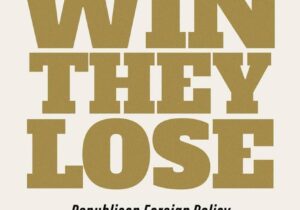Michael Sobolik has done something truly extraordinary. Countering China’s Great Game distills thousands of years of Chinese history, politics, and culture into a short, accessible volume. This book is the perfect China policy primer, a must-read for congressional staff and all those who would be informed in current debates around the United States’ evolving relationship with China.
The book’s chief virtue is clarity of vision. While there are other books that deal more extensively with China’s economy and looming demographic crisis, what Sobolik has to offer is an incisive analysis that brings great power competition with the Chinese Communist Party (CCP) into clear focus.
We are in the middle of a new Cold War with the CCP. Sobolik’s strategy for American dominance looks back to the past for lessons. The first Cold War was won by moving past détente to true competition with the Soviet Union. Initially, U.S. actions were simply reactionary, aimed at countering Soviet strengths. The breakthrough came when the U.S. shifted to proactively targeting Soviet weaknesses. Cold War strategists like Andrew Marshall turned the tide by developing a blueprint of net assessments of the enemy’s vulnerabilities and competitive strategies to exploit them.
Marshall’s framework requires that we answer the question “What game is China playing?” For decades, politicians on both sides of the aisle fell for a truncated narrative that downplayed China’s historical continuity and assumed that it was inevitably fated to become a “Western liberal democracy,” as Francis Fukuyama predicted in his 1989 essay, The End of History?.
What political scientists pronounced, politicians repeated. In 2000, then-Senator Joe Biden took to the chamber floor to argue that, “through two decades of economic opening to the outside world,” China was emerging out of its troubled past and becoming “truly modern.” Full embrace and economic partnership would make perfect sense if such liberalization were actually China’s trajectory.
But, as Sobolik cautions, “China’s history did not begin in 1949 when Mao Zedong and the CCP established the PRC. Nor did it start with China’s ‘Century of Humiliation,’ when European imperialist powers forcibly opened China in the mid-nineteenth century.” Modern China was not jettisoning its past but seeking to restore its former imperial greatness. As Xi Xinping said himself in 2013, the People’s Republic of China has pursued a “continuous quest… carrying forward the 5,000 plus years of Chinese civilization.”
Zhongguo and tianxia are the watchwords of that Chinese imperialist culture. As Sobolik explains, “the first record of China’s name dates back… more than three thousand years ago,” reading zhai zi zhongguo: “to live in the center of the kingdom.” Zhongguo is a “statement of cultural primacy and an explicit claim to civilizational hegemony.” Tianxia (“all under heaven”) is “China’s mission of spreading its cultural values beyond its borders.” Even as China has gone through many dramatic political transformations over the course of time, China has never stopped striving to fulfill these principles.
Sobolik argues for the centrality of China’s Belt and Road Initiative (BRI) in its modern quest for tianxia. Formerly referred to by the more revealingly imperialistic name of “One Belt, One Road,” these Beijing-backed infrastructure projects aim to “shift the world’s economic orientation away from America and toward the PRC.” Underwritten by Chinese-backed loans, BRI has expanded beyond “a land and sea project… to include the Digital Silk Road, the Polar Silk Road, the Health Silk Road,” and so on, spanning from personal protective equipment to telecom to film festivals and business conferences.
Much like in the Cold War against Russia, Washington’s temptation is to play a losing game of dollar-for-dollar competition on terms favorable to China. But, Sobolik counsels, “with an offensive framework, American policymakers could turn the tables and transform the BRI into an albatross to hang around the neck of the Communist Party.” Détente is not enough: “we need to create problems for the party.” Or, as Reagan put it, “We win. They lose.”
If the BRI is China’s “great game,” there are two major targets that follow. First, Xinjiang. The province of Xinjiang is China’s most critical gateway to Eurasia and the CCP seems to view its genocidal campaign against Xinjiang’s Uyghur Muslims as essential to securing it. While the US has already imposed sanctions on slave-labor produced goods from Xinjiang, Sobolik urges policymakers to go even further and “sanction all commerce passing through” the province. This would deal a severe blow to half of the BRI in Eurasia and crack down on the brutal persecution that takes place there (torture, brainwashing, forced sterilization, etc.).
The other prime target is China’s Great Firewall. The CCP is mortally afraid of of the Chinese people and so the regime created a massive censorship apparatus that rewrites history (e.g., the 1989 protests and massacre at Tiananmen Square are unsearchable in China) and, according to a Stanford report, “fosters an environment in which citizens do not demand such information in the first place.” Sobolik says the US should target the CCP’s “high-tech prison,” making it harder to keep the Chinese people in the dark. After all, China is already meddling in the US, launching cyberattacks against foreign websites, using social media to influence US elections, and even directly infiltrating databases of sensitive government information. Surely giving the CCP a taste of its own medicine, albeit in the form of a free and open internet, would be salutary.
Perhaps understated in Countering China’s Great Game, but implicit all throughout, is one enduringly important insight: China’s greatest political liabilities are inextricably linked to its greatest moral failings: namely, genocide and totalitarian oppression.
Though Sobolik makes only a quick, passing reference to Reinhold Niebuhr, the influence of his outlook on the spirit of the book is clear: sin is real and it has empirically verifiable consequences. Whereas certain schools of foreign policy have felt America’s conscience to be one of its greatest weaknesses, Sobolik argues the opposite: America is great because America is good.
“To establish justice in a sinful world is the whole sad duty of the political order,” as Niebuhr once wrote. Nations that neglect that duty, impossible as it may be, will pay for it one way or another.






